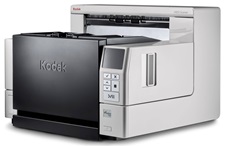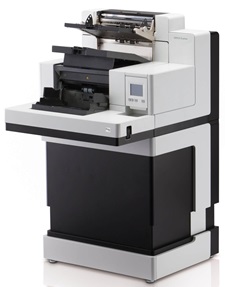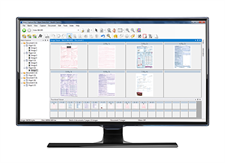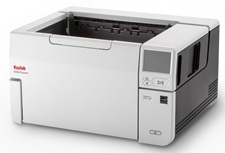Understanding the Importance of Records Management
Learn why records management is crucial to the success of your business, and then get started with these three simple steps
Records management is a crucial element of a successful enterprise, regardless of industry. Still, many businesses fail to recognize its importance.
What Is Records Management?
Also referred to as records information management, records management is the process of supervising and administering paper and digital records. This process continues throughout the entire records management life cycle, which spans the production, receipt, maintenance, use, and disposal of information.
The records that are being managed will vary from industry to industry, but can include:
|
|
These records should be organized according to a classification system that allows for easy access, either on- or off-site or, better yet, digitally in the cloud. However, the records are maintained, the primary objective of records management is to keep necessary information organized and at the ready, both for efficient internal operations and in case of a compliance audit.
Benefits of Records Management
Reduce Clutter and Storage Costs
Part of proper records management involves disposing of information that has expired, meaning that it’s no longer useful or necessary.
Government agencies are subject to local government records retention schedules, which outline how long specific documents need to be retained for and, when applicable, how they should be discarded.
Even if you do not work for a government agency, though, you still need to be on top of your records management. For example, the IRS recommends that businesses keep tax records for seven years, as they may be necessary in certain circumstances. Bank account and credit card statements, cancelled checks, and HR records also have a shelf life of seven years, with employment tax records coming in at four years.
Organizations that fail to get rid of unnecessary documents face a never-ending accumulation of information, which has to live somewhere. This can mean a growing number of file cabinets, adding to both office clutter and storage costs.
Proper record disposal will help with part of this problem by ensuring that you only maintain the records that you really need. Digitizing takes you the rest of the way by freeing up invaluable office space.
Access Information Quickly and Easily
Nothing eats into productivity more than having to search for information or documents. Yet people spend about a week searching for lost papers and items every year.
Records management aims to prevent this issue first by eliminating unnecessary documents, so that you have less to sort through, and also by indexing and organizing the records that are here to stay. Staff should be able to access the information they need quickly, reducing search times that cut into productivity and distract from the real work at hand.
Scanning documents into a digital document management system increases efficiency even further, allowing you to access, share, and update data remotely with just a few clicks.
Adhere to Regulatory Compliance
As mentioned above, local governments require that certain industries maintain certain types of records for a specific amount of time, as outlined in their records retention schedules. Federal laws and regulations such as the Health Information Portability and Accountability Act (HIPAA) and the Fair and Accurate Credit Transactions Act of 2003 (FACTA) make proper records management even more crucial.
>> Learn about how to choose the right document scanner for health care
Organizations that fail to adhere to these regulations can face costly financial penalties or even legal actions. Strict records management is the only way to ensure regulatory compliance and avoid these potentially crippling consequences.
Protect Important Information
Whether or not your organization is subject to compliance regulations, protecting important company assets and confidential information is essential to your ability to function in the long term. Theft, natural disasters, human error, and deteriorating document quality are all threats to the integrity of your records.
While some companies choose to minimize these threats by storing paper documents in a protected off-site storage facility, the best and only way to prevent data loss is to go paperless by storing records in the cloud. Many digital records management systems even allow you to set specific restrictions, so that only authorized staff can access or update sensitive documents.
Save Money and Time
Records management takes a lot of time and money, requiring storage space, printing materials, and staff to file and maintain documents. Of course, the time and money necessary only increase when records management isn’t handled well, and staff must search for or even replace lost records.
A digital records management system saves you these expenses by eliminating the resources associated with printing, organizing, storing, and maintaining documents. The increased efficiency that comes with such a system only further reduces costs.
Control Record Growth
The process of implementing records management after having neglected it may require a lot of upfront work, depending on the degree of disorder and how long records have been accumulating for. However, once you have a plan for records management in place, you should have no trouble keeping your documents in check.
Whenever a new record is created, you should have the necessary knowledge or resources at hand to decide whether it needs to be maintained. If it doesn’t, you can dispose of it properly to avoid unnecessarily growing your records; if it does, you have a system in place to organize it logically, ensuring easy future access.
Boost Employee Motivation
If employees are constantly faced with disorganized or lost records that slow or even block their workflows, they will quickly become frustrated. Energy that should go toward work instead goes toward solving problems that shouldn’t exist in the first place. Though not quantifiable, this poor working environment will certainly affect employee motivation.
On the other hand, employees who can finish work efficiently without any blockages will feel empowered by their accomplishments and eager to keep going. The difference between these two situations lies in effective records management.
How to Improve Records Management
1. Monitor Federal Regulations and Document Retention Schedules
Your organization should be aware of any and all federal regulations that apply to your work. Monitor them regularly to ensure that you remain compliant with any updates that are made.
Local governments may also issue updates to their document retention schedules, so check your state’s schedules frequently.
If none of these policies apply to your business, now is the time to do some research, establish best practices for different document types, and make a plan.
2. Discard Expired Documents
Once you’re aware of any regulations or best practices that you need to follow, your first step is to dispose of unnecessary documents. Keep in mind that the government regulates how certain kinds of records are discarded. For example, after the established retention period, Washington State requires that public hospitals destroy diagnostic images, but that they transfer maternity registers to the Washington State Archives for further appraisal.
Disposing of the records that you don’t need will make organizing what’s left over that much easier.
3. Digitize Everything
While maintaining an effective records management system on-site or in off-site storage is possible, digitizing records is becoming the norm — and for good reason. Storing records in the cloud allows your organization to:
- Reduce office clutter.
- Minimize costs associated with printing, storing, and maintaining documents.
- Protect information from threats such as theft, natural disasters, human error, and deteriorating document quality.
- Access, share, and update records remotely, speeding up workflows and empowering you to make smart decisions based on up-to-date data.
The challenge, then, isn’t deciding how to move forward with records management so much as deciding what technology to use to do so.
>>Read records management case studies
The Alaris IN2 Ecosystem is particularly suitable for this task, with a variety of scanners and software solutions to make implementing and maintaining records management easy. Alaris features that directly benefit records management include:
- Intelligent job select: Configure multiple jobs with unique settings using patch sheets, saving time on job setup.
- Outstanding image clarity and character definition: The right imaging technology, such as Alaris Perfect Page makes OCR and barcode reading more accurate, requires less data correction and manual entry and streamlines automated data delivery to applications.
- Wireless technology: Scanners function wirelessly within your existing infrastructure and applications, making integration simple and quick.
- Usability: You won’t be improving your records management efficiency if your team can’t figure out how to use the new technology. Thankfully, scanners from Alaris feature user-friendly touchscreens and can be configured for one-touch scanning. Certain scanners, such as the Alaris S2060w, even offer wireless connectivity to mobile devices.
- Sorting: Preparing documents for scanning can take much longer than the scanning itself. Kodak scanners reduce your pre- and post-scanning workload by separating out patch sheets, isolating documents such as driver’s licenses and stock certificates, and similar tasks.
- Four-layer document protection: This includes several different capabilities. Length detection protects against papers getting stuck or overlapping (which causes them to appear as one long document); ultrasonic double document detection ensures that only one document enters the scanner at a time; intelligent document protection “listens” for crumpling sounds, stopping the job in time to protect the document; and metal detection prevents overlooked paper clips and staples from disrupting the process or scratching the scanner glass.
- Intelligent barcode reading: Barcode scanning allows you to scan documents to the right place or integrate them into specific business processes. The newest Kodak scanners capture a high-resolution version of barcodes, ensuring that they can be read properly so that manual data entry isn’t necessary.
- Intelligent printing: Image addressing, patch counting, and indexing help track data in business systems, automating tasks and increasing efficiency.
Whether you’re opening a new business or are taking the initiative with your current organization, now is the time to get your records in order. Visit our site or contact us directly to learn more about how the Alaris IN2 Ecosystem can help improve records management!
Insights and Case Studies
Kodak Alaris and Kainos Evolve Support UH Bristol's Goal to Improve Patient Safety and Experience
Clinicians have access to digital casenotes from anywhere and at any time
Truck Dealer Group Drives Savings and Efficiency With Fleet of KODAK S2050 Scanners
Truck Country evolves from MFP-based document capture to a tightly integrated digital document management solution featuring scanners from Kodak Alaris in 20+ remote locations
County Department of Social Services Goes Digital, Powered by Scanners From Kodak Alaris
Related solutions

S2050 Scanner
50ppm | 80 Sheet ADF- Intuitive and productive
- Built-in Active Feeding System (AFS)
- Dual Light Illumination (DLI)
- 20 Quick Scan Jobs

i3250 Scanner
- Up to 50 ppm color/ bw, A3 scanner
- Integrated book-edge flatbed for exception documents

i4250 Scanner
110ppm | 500 Sheet ADF- Intelligent and compact scanning
- Advanced multi-feed sensors
- Metal detection included
- Digital & physical Imprinting options

i5850S Scanner
210ppm | 750 Sheet ADF- Floor standing and height adjustable
- Three way sorting
- Surepath™ intelligent document feed technology
- Intelligent document tracking & imprinting

Capture Pro Software
- Ideal for paper-intensive business applications
- Extensive integration with ECM systems
- Network and Import modules available

S3060 Scanner
60ppm | 300 Sheet ADF- Robust and Compact
- USB and wired Ethernet
- Surepath™ intelligent document feed technology
- FADGI 3-Star / MTR Compliant

S3100 Scanner
100ppm | 300 Sheet ADF- Compact and powerful
- USB and wired Ethernet
- Surepath™ intelligent document feed technology
- FADGI 3-Star / MTR Compliant

S3120 Scanner
- Up to 120 ppm color/ bw, A3 scanner
- USB and Ethernet-enabled
- Up to 35,000 pages per day

S3100f Scanner
100ppm | 300 Sheet ADF- Versatile and powerful
- USB and wired Ethernet
- Surepath™ intelligent document feed technology
- FADGI 3-Star / MTR Compliant
ABOUT THE ALARIS DIVISION OF KODAK ALARIS
Kodak Alaris is a leading provider of information capture and intelligent document processing solutions that simplify business processes. We exist to help the world make sense of information with smart, connected solutions powered by decades of image science innovation. Our award-winning software, scanners, and professional services are available worldwide and through our network of channel partners.
Partners
Privacy Notice | Legal / Site Terms | California Notice at Collection | Do Not Share My Personal Information
© 2024 Kodak Alaris Inc. TM/MC/MR: Alaris, ScanMate. All trademarks and trade names used are property of their respective holders. The Kodak trademark and trade dress are used under license from Eastman Kodak Company.


